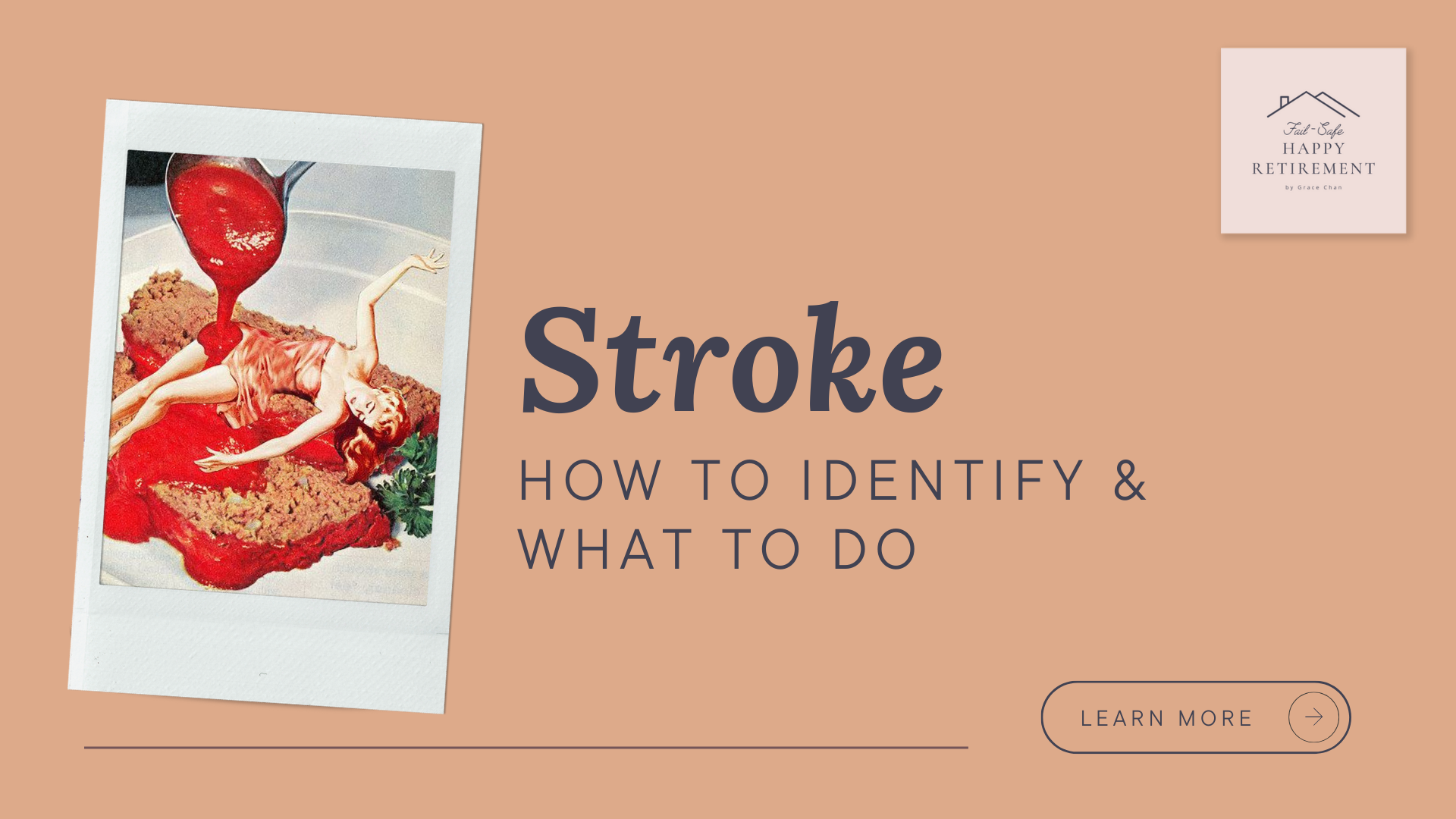Stroke - How to identify and what to do
Coming to mid-age, there is more frequent news about health issues from people around us, like who’s got cancer, or who had a heart attack. And stroke is also quite common among these news. My grandma had a stroke when she won a huge game in mahjong, and my aunt had one at a countdown party a few years ago. Both had fortunate endings, simply because people around them did the right thing during such emergencies.
I’m not a medical professional but I was at a “stroke and brain tumour" seminar by a Neurosurgery specialist. I thought I’d share my takeaways, as this could save lives.
COMMON Causes of Stroke
Two of the most common causes of strokes are:
Ischemic stroke - the damage is caused by a lack of blood supply in the brain. It is formed due to the narrowing or blockage of blood vessels commonly caused by cholesterol.
Hemorrhagic Stroke - caused by bleeding into the brain tissue.
COMMON MYTHS
There are some sayings in the traditional Chinese community that each elderly should have Angong Niuhuang pill (a kind of off-the-counter Chinese medicine named 安宮牛黃丸 in Chinese) at home so that when a stroke happens, they can take it to prevent death. According to the official website of the brand selling this pill, it can “clear away heat and detoxify, eliminate the deficiency of fire and heat in the body, help discharge toxins from the body”. We have raised questions during the Neurosurgery doctor’s talk about this, and he would not suggest taking any kinds of medications during such an emergency before a proper diagnosis of the cause of stroke because:
it is unsure if it’s caused by a lack of blood supply to the brain or if there’s internal bleeding
unclear scientific research on these medications, and whether they will encourage blood flow or the other way round
Actions to take When there is a stroke
When we suspect our friend or family member has a stroke, below are the steps we should take to ensure the patient has proper treatment within the golden 3 hours.
Identify if it’s a stroke - if there are any of the following, proceed with step 2:
Facial weakness
Arm weakness
Speech problems
Call 999 immediately for an ambulance
Record the timing of the happening
Always get the ambulance and go to the closest public hospital first for emergencies. There are special priority routes for strokes in public hospitals where doctors prioritize these cases. So make sure you report to 999 that it’s suspected to be a stroke.
Treatment Procedures
Here are the common treatment procedures once the patient is admitted to the hospital:
Paramedic
Accident & Emergency triage
Responsible nurse initiates tissue plasminogen activator (tPA) screening assessment (get medical history ready)
Illness history (Time of onset of symptoms/Last normality, medical history)Schedule a scan and blood draw
Check electronic medication records
Contact neurologist
Transfer to Stroke Treatment Department, Intensive Care Department
Inject tissue plasminogen activator (tPA) as directed by neurologist
Surgery
What You Can Do Now
If it happens to us, we should prepare our records at any given point. Share a hard or soft copy of this Family Emergency File with a few people we trust, as it includes all of your family’s medical histories, allergies, long-term medications, blood type, insurance details and more. If you don’t have one for your family, book this free service now via this link or the button below. We can save our own lives if we plan well!


